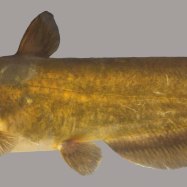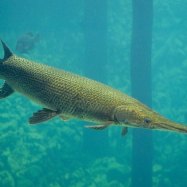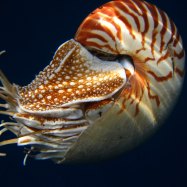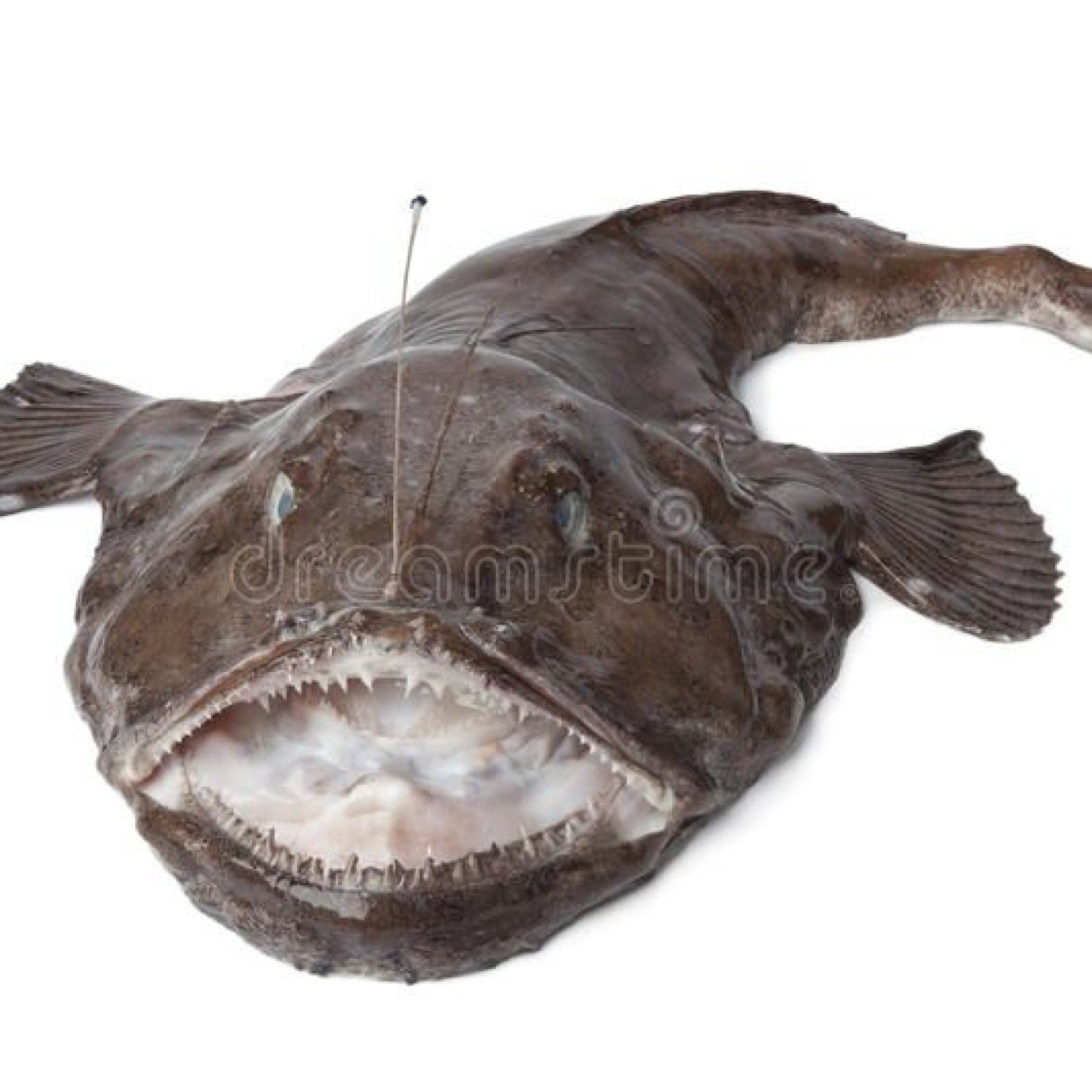
Monkfish
Up to 4 feet (1.2 meters)
The monkfish, also known as the goosefish, is a unique species found in coastal waters. It can grow up to 4 feet long with a flat, broad head and a tapering body. They belong to the Lophiidae family and are often caught for their delicious and meaty flesh. However, they have a peculiar appearance, with a large mouth and a bulbous head, making them a fascinating catch for fishermen and a unique sight for divers.
Animal Details Summary:
Common Name: Monkfish
Kingdom: Animalia
Habitat: Marine
The Mysterious and Misunderstood Monkfish: Unlocking the Secrets of the "Sea Devil
Monkfish, scientifically known as Lophius piscatorius, is a species of fish that has long captured the imagination of fishermen, chefs, and seafood enthusiasts alike. With its unique appearance and elusive nature, this marine creature has been given many names, including "sea devil," "goosefish," and "anglerfish." But there is much more to this enigmatic creature than its sinister nicknames suggest.In this article, we will delve into the fascinating world of the monkfish, uncovering its biology, behavior, and distribution Monkfish. From its evolution and feeding habits to its cultural significance and commercial importance, we will explore all the aspects that make this animal a true wonder of the seas.
The Curious Classification of the Monkfish
Monkfish belongs to the kingdom Animalia, meaning it is a member of the animal kingdom. Its phylum is Chordata, which includes all animals with a backbone or spinal cord. Within the class Actinopterygii, the monkfish belongs to the order Lophiiformes, which also includes other deep-sea dwellers such as frogfish and stonefish.The family Lophiidae is where the monkfish finds its closest relatives, with over 6 genera and 20 species. Interestingly, the monkfish is the only member of the genus Lophius, making it a truly unique creature in its family.
The Habitat and Distribution of the Monkfish
Monkfish is a marine species, meaning it lives in the salty waters of the ocean. It is mainly found in the North Atlantic and Mediterranean Sea, although it has been recorded in other parts of the world.Its distribution is vast, spanning multiple countries Mojarra. In the North Atlantic, the monkfish can be found from Canada and the United States to Iceland and the United Kingdom. In the Mediterranean, it can be found in the coastal waters of Spain, Portugal, France, and Italy.
In terms of habitat, the monkfish is often found on the bottom of the ocean, camouflaging itself among rocks and sand. It is also known to migrate to deeper waters during the winter months, making it a true deep-sea dweller.
The Ambushing Predator: How Monkfish Hunt
One of the most fascinating aspects of the monkfish is its feeding method. It is an ambush predator, meaning it waits patiently for its prey to come to it, rather than actively chasing it.Using its specialized dorsal fin, the monkfish lures its prey towards its large mouth, which is lined with sharp, inward-pointing teeth. Once the unsuspecting fish or crustacean is close enough, the monkfish makes a quick snap of its jaws, swallowing its prey whole.
This behavior is made possible by the flat and broad head of the monkfish, which serves as a perfect camouflage, allowing it to blend in with its surroundings. It also has an extendable jaw, which can swallow prey larger than its own size.
The Appearance and Anatomy of the Monkfish
When it comes to appearance, the monkfish is truly a unique creature. Its body is flattened and elongated, tapering towards the tail, with a broad and flattened head. It has a wide mouth, with small eyes and large, fleshy lips. Its coloration can vary, but it is typically a mix of brown or gray with darker spots and stripes.One of the distinguishing features of the monkfish is its ability to change the color of its skin to match its surroundings, making it an expert in disguise. This is achieved through special pigment cells called chromatophores, which expand or contract to reveal different colors.
The Size and Growth of the Monkfish
Monkfish can grow up to 4 feet (1.2 meters) in length, with females being larger than males. They can weigh up to 60 pounds (27 kilograms), making them one of the largest predators in their habitat.Monkfish have a relatively slow growth rate, taking about six years to reach sexual maturity. They can live up to 24 years, making them a long-lived species in comparison to other marine creatures.
The Cultural Significance of Monkfish
Throughout history, the monkfish has been shrouded in superstition and folklore. Due to its unique appearance and eerie behavior, it has been associated with mystical creatures and has been given many ominous names in different cultures.In Japan, it is known as "ankou" and is believed to be a messenger of the god of the sea. In Greek mythology, it is thought to be the transformed form of a mermaid who fell in love with a human but was cursed by Poseidon. And in Europe, it was once believed that the devil himself had disguised himself as a monkfish, hence the name "sea devil."
In addition to its cultural significance, the monkfish also holds commercial importance. Its meat is considered a delicacy in many countries, especially in Europe. In some areas, it is even called the "poor man's lobster" due to its similar texture and flavor to the expensive crustacean.
The Sustainability of Monkfish as a Food Source
Monkfish may be popular among seafood lovers, but it is important to consider the sustainability of this species as a food source. Due to its slow growth and long lifespan, monkfish is vulnerable to overfishing.Fortunately, there have been efforts to regulate the harvesting of monkfish and ensure its sustainability. In the United States, monkfish stocks are monitored and managed by the National Oceanic and Atmospheric Administration (NOAA), with strict catch limits set to protect the population.
The MSC (Marine Stewardship Council) has also certified some monkfish fisheries as sustainable, ensuring that the fish is harvested in a way that minimizes its impact on the environment and allows the population to replenish.
The Future of the Monkfish: Evolving to Survive
As with all species, the monkfish is constantly evolving to adapt to changing environments. In the past century, there have been observable changes in its size and diet due to overfishing and the decline of its natural prey.Studies have shown that monkfish from North Sea waters have become smaller in size and have a different diet compared to those in other areas. This is believed to be a direct result of the reduced availability of their preferred prey.
As the ocean continues to face challenges such as pollution, climate change, and overfishing, it is important to monitor the evolution of species like the monkfish and take action to protect their habitats.
Concluding Thoughts
The monkfish may have a menacing appearance and strange behavior, but it is a truly remarkable creature with a vital role to play in the ocean's ecosystem. As we continue to learn more about this enigmatic species, it is important to appreciate and protect its unique qualities.From its evolution and feeding habits to its cultural significance and sustainability, the monkfish is a natural wonder that continues to fascinate and surprise us. So the next time you see this "sea devil" on a menu or in the waters, remember the many mysteries and wonders that make it a true marvel of the seas.

Monkfish
Animal Details Monkfish - Scientific Name: Lophius piscatorius
- Category: Animals M
- Scientific Name: Lophius piscatorius
- Common Name: Monkfish
- Kingdom: Animalia
- Phylum: Chordata
- Class: Actinopterygii
- Order: Lophiiformes
- Family: Lophiidae
- Habitat: Marine
- Feeding Method: Ambush predator
- Geographical Distribution: North Atlantic and Mediterranean Sea
- Country of Origin: Multiple countries
- Location: Coastal waters
- Animal Coloration: Brown or gray
- Body Shape: Flat and broad head, tapering body
- Length: Up to 4 feet (1.2 meters)
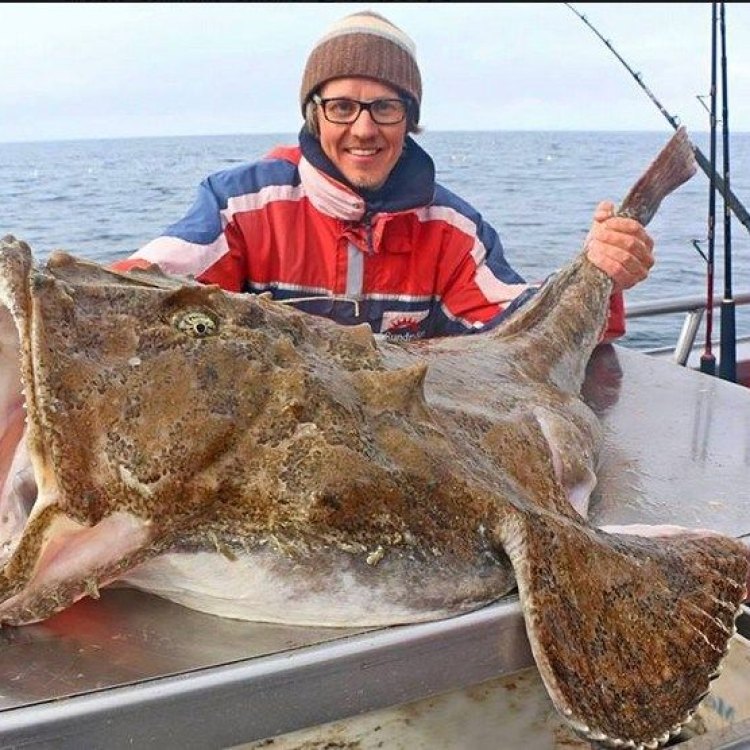
Monkfish
- Adult Size: Up to 4 feet (1.2 meters)
- Average Lifespan: Up to 25 years
- Reproduction: Oviparous
- Reproductive Behavior: External fertilization
- Sound or Call: Unknown
- Migration Pattern: Unknown
- Social Groups: Solitary
- Behavior: Lies in wait for prey
- Threats: Overfishing
- Conservation Status: Not evaluated
- Impact on Ecosystem: Top predator in its habitat
- Human Use: Commercial fishing, culinary delicacy
- Distinctive Features: Enormous mouth and sharp teeth, camouflaged body
- Interesting Facts: Monkfish are also known as anglerfish or goosefish. They have a unique fishing technique where they use a lure appendage on their head to attract prey. Monkfish are highly valued for their meat, which is often compared to lobster in taste and texture.
- Predator: Sharks, larger fish
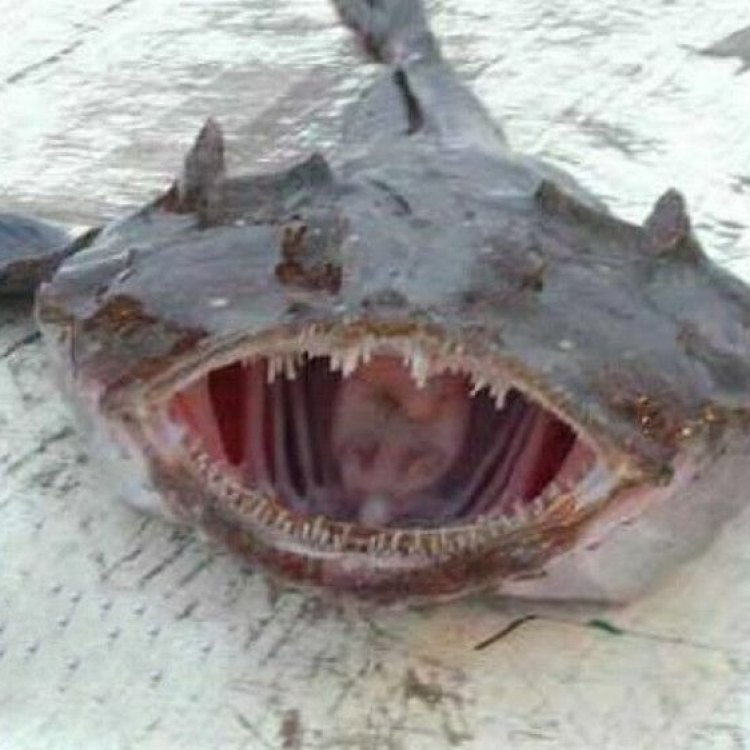
Lophius piscatorius
Monkfish: The Silently Deadly Hunter of the Sea
When we think of predators in the ocean, our minds often jump to the majestic sharks, the cunning killer whales, or the ferocious crocodiles. However, there is one silent hunter that often goes unnoticed and underestimated – the monkfish. This mysterious creature has fascinated fishermen, scientists, and food enthusiasts for centuries with its unique characteristics and impressive survival techniques.Monkfish, also known as anglerfish or goosefish, is a benthic or bottom-dwelling fish found in the Atlantic Ocean, from Canada to the Gulf of Mexico and Europe to Africa PeaceOfAnimals.Com. It is a member of the anglerfish family, Lophiidae, and is most commonly found in deep-sea habitats, typically 400-600 meters below the surface, although they can also be found in shallow waters.
Despite being around for millions of years, the monkfish is still a relatively unknown species. So, let's dive deeper and discover the intriguing world of this silently deadly hunter of the sea.
The Enormous and Camouflaged Monkfish
Monkfish can grow up to 4 feet (1.2 meters) in length, making them one of the largest bony fish found in the ocean. They have a broad, flattened head, and a tapered body covered in tiny, rough scales. What makes monkfish stand out from other fish is its enormous mouth and sharp teeth.Their mouth is incredibly wide and stretches beyond their eyes. It is equipped with several rows of long, pointed teeth, similar to those of a shark Moray Eel. These teeth are angled inwards, making it difficult for prey to escape once caught in the monkfish's mouth. Their strong jaws and powerful suction help them swallow prey that is even larger than their own bodies.
In addition to their size and impressive dentition, monkfish also have a unique body shape that aids in their hunting abilities. Their bodies are flattened and colored in shades of brown, green, and gray, which helps them blend in with the ocean floor. Their skin is also covered in small, hard tubercles, giving them the appearance of a rock or sponge on the seafloor.
The Monkfish's Hunting and Reproductive Behaviors
Monkfish are solitary hunters, lying quietly buried in the sand or mud, waiting for unsuspecting prey to swim by. They have a unique fishing technique where they use a lure appendage on their head to attract prey. This lure, also called an "esca," is a fleshy growth on the top of their heads that resembles a worm, squid, or fish.The monkfish will wiggle and dangle the lure to mimic the movements of its prey, tricking them into thinking it's an easy meal. Once the prey gets close enough, the monkfish will quickly snap its massive jaws, swallowing the prey whole. This technique works so effectively that monkfish can swallow prey up to twice its size!
Monkfish are oviparous, meaning they reproduce through external fertilization. The male monkfish will release sperm into the water, and the female will release her eggs. The fertilized eggs will then sink to the seafloor and attach to objects such as rocks, sponges, or the seafloor itself.
The monkfish's reproductive behavior is still a mystery, and very little is known about their breeding habits. However, it is believed that their eggs hatch as larvae and then go through a metamorphosis stage before becoming adult monkfish.
Monkfish: A Missing Piece in the Ecosystem
As a top predator in its habitat, monkfish plays a vital role in the ocean ecosystem. They feed on a variety of fish, including herring, mackerel, flounder, and even other smaller monkfish. By regulating the population of their prey, monkfish ensure that other fish species do not become overpopulated and upset the balance of the ecosystem.Furthermore, these bottom-dwelling predators also play an essential role in the nutrient cycle of the ocean. Their diet mainly consists of small fish and crustaceans, which they break down into smaller particles, releasing vital nutrients back into the water. These nutrients help other marine life thrive, making monkfish a crucial part of the ocean's food chain.
The Underestimated Culinary Delicacy
Despite its intimidating appearance and hunting abilities, monkfish is highly valued for its meat, which is often compared to lobster in taste and texture. Its firm, white flesh has a mild, sweet flavor and a meaty texture, making it a favorite among seafood lovers.Monkfish is known by various names in different countries and cultures. In France, it is called "lotte," and in America, it goes by the name "monkfish." In Japan, it is considered a delicacy and is known as "ankou" in sushi restaurants. In Iceland, where it is commonly found, it is called "abbikarfa."
The flesh of the monkfish is typically sold in fillets and is versatile in cooking. It can be baked, broiled, grilled, or even fried. In addition to its taste and texture, monkfish is also prized for its high nutritional value. It is an excellent source of protein, vitamins, and minerals, including potassium, magnesium, and selenium.
The Threats to Monkfish Population
Unfortunately, monkfish's popularity and value for its meat have put a strain on its population. Commercial fishing targeting monkfish has increased over the years, and as a result, its population has declined significantly in recent decades.Another major threat to monkfish is overfishing. Monkfish are often caught as bycatch while fishermen are targeting other species, such as cod or haddock. Bycatch refers to unintentionally catching non-targeted species, and sadly, it accounts for a significant portion of monkfish deaths each year.
Due to these threats, monkfish is listed as "not evaluated" on the International Union for Conservation of Nature (IUCN) Red List, which means its conservation status is unknown. However, there are efforts to control its commercial fishing, and some fisheries have implemented sustainable practices to maintain the monkfish population.
The Natural Predators of Monkfish
Even though monkfish is a top predator in its habitat, it is not without its natural predators. Larger fish, such as cod and halibut, and even some species of shark, feed on monkfish. However, the biggest predator of monkfish is human beings.With the increase in commercial fishing and the demand for its meat, monkfish's survival is threatened on both ends – by overfishing and natural predators. It is crucial for conservation efforts to be implemented to protect this vital species and maintain the balance of the ocean's ecosystem.
The Future of Monkfish
While monkfish's population may be declining in some parts of the world, it is still abundant and thriving in other areas. With sustainable practices and conservation efforts, it is possible to maintain a healthy monkfish population and ensure its survival for future generations.Furthermore, by educating the public about the importance of this species in the ocean's ecosystem, we can foster a greater appreciation for the monkfish and its unique characteristics. Instead of being seen as a scary predator, it should be recognized for its vital role in maintaining the delicate balance of the underwater world.
In conclusion, the monkfish may be a mysterious and often misunderstood creature, but it is undoubtedly a fascinating and crucial part of our ocean's ecosystem. Its enormous mouth, sharp teeth, and camouflaged body make it a formidable hunter, while its delicious meat has made it a prized delicacy in many countries. However, we must also recognize the threats to its population and take action to protect this silent but deadly predator of the sea.
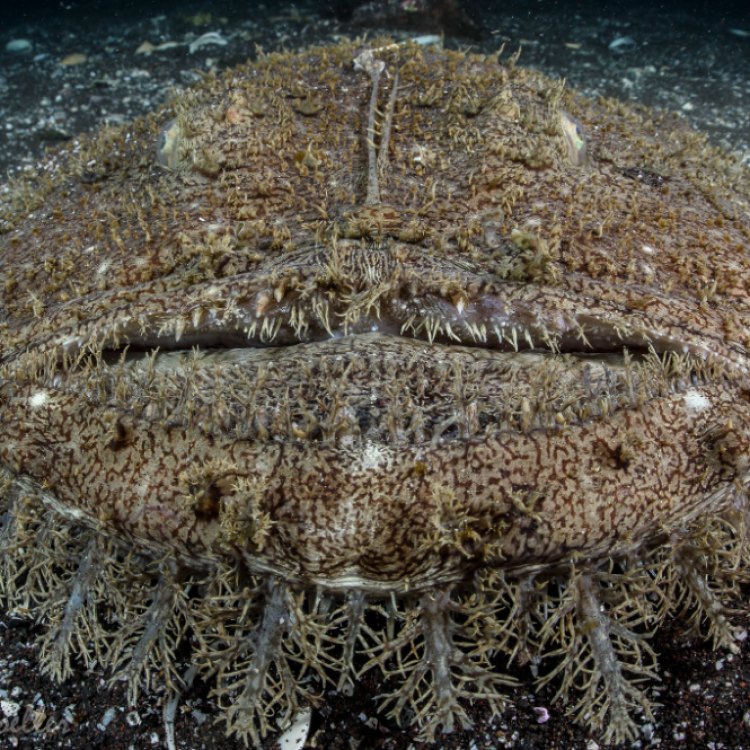
The Mysterious and Misunderstood Monkfish: Unlocking the Secrets of the "Sea Devil
Disclaimer: The content provided is for informational purposes only. We cannot guarantee the accuracy of the information on this page 100%. All information provided here may change without prior notice.

